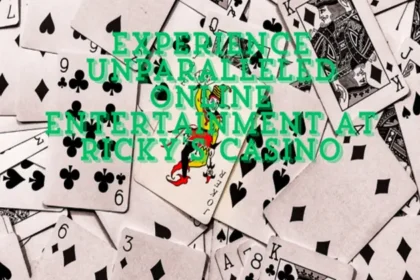Think back on your school days, and there’s a good chance you’ll remember someone with a lisp. Someone who had to endlessly repeat themselves to be understood, who often wore ridicule from their classmates. From everyone in the schoolyard.
Maybe that someone was you. Trying to pronounce sun and ending up with something closer to thun. To a parent or teacher, a lisp can be seen as a cute speech quirk. It’s a common challenge for kids in their formative years, and while a lisp often fades with time, if left unchecked, it can follow you into adulthood.
If it’s something you’ve had to live with or have a child experiencing it, we’re here to help. Together, let’s unpack the four main types of lisps, how they sound, how they happen, and what you can do to fix them.
What is a lisp?
Simply put, a lisp is a speech disorder. If you have a lisp, making sounds like S and Z is tough; mispronunciation is the result. It starts with tongue placement. Place your tongue correctly during speech, and you make clear, crisp sounds; place it incorrectly, and your speech sounds muffled. This is when you make the ‘th’ sound common to all people with a lisp.
Everyone has a lisp when they first start speaking; it’s part of your natural speech development. The difference is when you fail to iron out the creases in your speech, and the lisping persists. A lisp won’t affect your physical health. Your mental health isn’t so safe, so it’s best to address it as soon as possible.
Lisps: The 4 main types
To the untrained ear, all lisps sound the same. That said, they aren’t created equal. It all depends on how your tongue behaves during speech. Let’s explore the four main types of lisps.
1. Frontal Lisp (Interdental Lisp)
The most common type. Happens when your tongue sticks out between your front teeth, making the ‘th’ sound (For example, sun sounds like thun). Most often seen in toddlers, most often fades naturally.
2. Lateral Lisp
If someone speaks and the words sound almost wet, it’s likely a lateral lisp. Happens when air escapes over the sides of your tongue. Unlike a frontal lisp, a lateral lisp won’t leave on its own. You’ll need an SLP to help shuffle it out the door.
3. Palatal Lisp
A palatal lisp is tricky to spot. Happens when your tongue presses the roof of your mouth, muffling and distorting speech sounds.
4. Dental Lisp
Like the frontal lisp, but more subtle. Happens when your tongue presses your teeth without poking through. Harder to notice, yes, but no less damaging to sound clarity.
What Causes a Lisp?
Many things. It can be neurological, a developmental delay that never corrects itself. If a child has a hearing impairment, the lack of clarity around the speech they hear might contribute. Cerebral Palsy, cleft palates, and weak muscles; the list goes on. Some even credit a child’s prolonged use of a pacifier as a proven cause (though this isn’t a proven fact).
Perhaps more important than recognizing your kid has a lisp is noticing when that lisp isn’t going away. If nothing is done to address it, having the affliction can become a lifelong companion, and not the helpful kind.
How do you diagnose a lisp?
Given that lisps affect certain speech sounds that we make every time we speak, they’re easy to spot. But, noticing a lisp isn’t diagnosing a lisp. Like anything medical, you need a certified professional to make that call for you.
A Speech-Language Pathologist (SLP) is who you need to consult. An SLP will listen to how your child speaks, check their oral structures, and assess whether your child’s lisp is typical or whether it needs closer attention.
If this is a field of medicine you have an academic interest in, then pursuing a career as a SLP might be up your alley. There are several effective avenues for this pursuit, including an online masters SLP, which will set you on this career path.
Practice and patience: How to treat a lisp
A one-size-fits-all approach won’t work with lisps. Your treatment should always be tailored to the type of lisp you have, along with your individual needs. Treatment might include:
Auditory discrimination: Learning to recognize the difference between correct and incorrect sounds
Oral-motor exercises: Activities that strengthen your speech muscles
Articulation therapy: Where you practice sound production and correct tongue placement
Timing is key: When to address a lisp
When is the best time to address a lisp? As soon as you notice it, ideally. That said, lisps often fade without intervention, so keep this in mind. The following signs are a strong indication that it’s time to act:
- Your child has a noticeable lisp past the age of five or six
- You (and other adults) find your child’s speech difficult to understand
- Your child constantly feels embarrassed or frustrated when trying to speak
- Your child’s teacher expresses concern over their ability to speak
Any of these sound familiar? Get an evaluation. Not sure where to look? Your local GP should be able to refer you to an SLP. Your school should be able to as well. If not, try the American Speech-Language-Hearing Association (ASHA).
~
When it comes to lisps, it’s a matter of perspective. They can seem a small issue, an endearing quirk that adds to someone’s character. They can also have a huge, and often adverse, impact on someone’s ability to communicate confidently, especially in childhood when you’re first learning to make friends. That’s why you should never ignore a lingering lisp. With time, you can restore your ability to speak clearly; restoring your self-confidence is another matter altogether.
It’s about taking note of the small details. Listen to the way your child speaks. If those muffled sounds persist, consult with an SLP. Everyone deserves to be understood.











